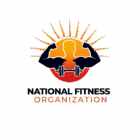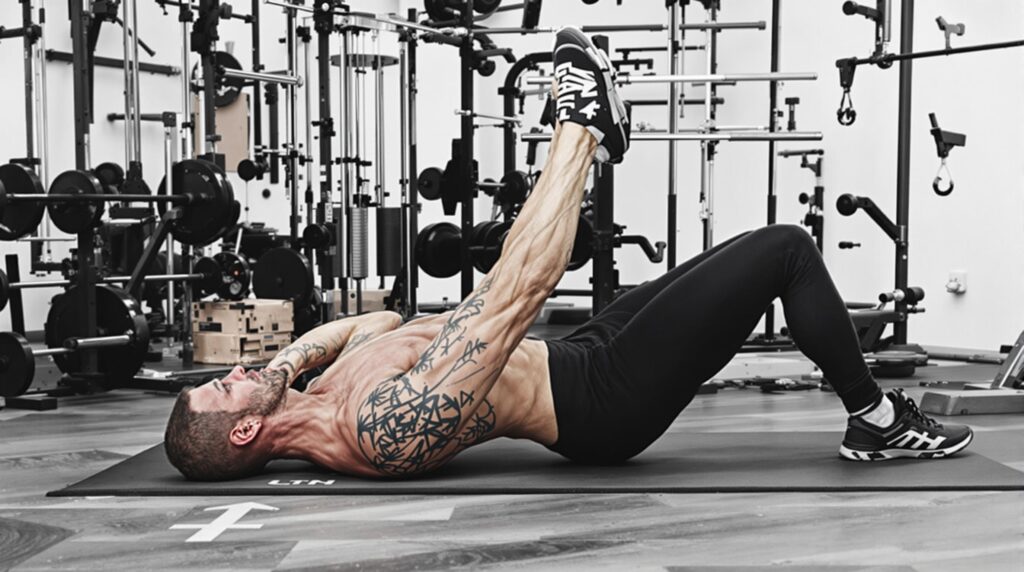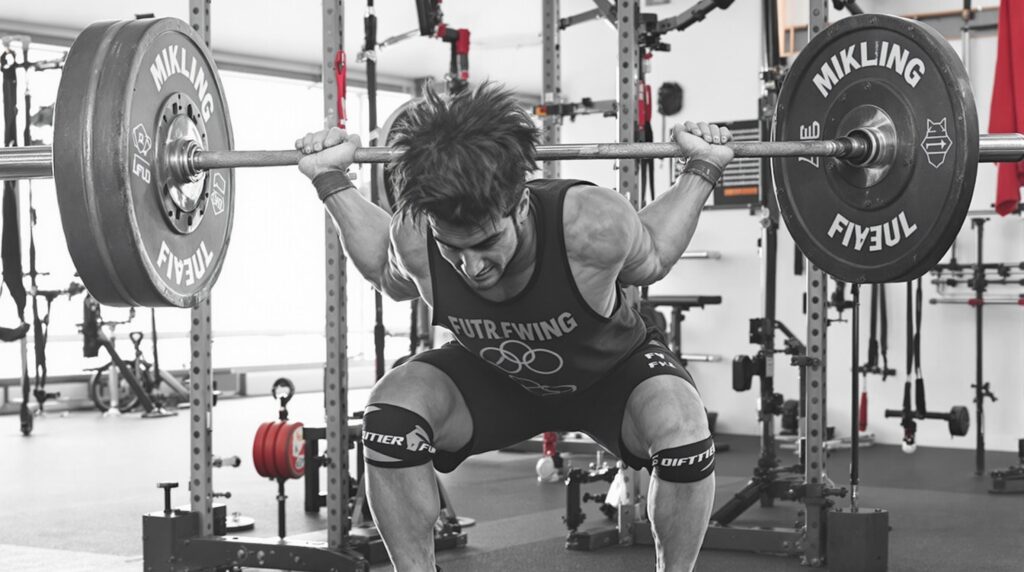The relationship between stretching and muscle hypertrophy has evolved dramatically based on recent scientific research, revealing that strategic stretching techniques can significantly amplify muscle growth beyond traditional resistance training methods. New studies indicate that certain stretching protocols could increase muscle development by up to 50% when properly implemented alongside conventional strength training programs, answering the common question: does stretching help muscle growth?
Key Takeaways
- Training muscles in their lengthened position can increase hypertrophy by 30-50% compared to partial ranges of motion
- Post-workout loaded stretching activates key muscle growth pathways without compromising strength
- Pre-workout static stretching can temporarily reduce force production by 10-15%, making timing crucial
- Eccentric-focused training with slow lowering phases maximizes the stretch stimulus for growth
- A balanced approach combining traditional lifting with strategic stretching protocols yields optimal results
The Science Behind Stretch-Mediated Hypertrophy
Stretch-mediated hypertrophy occurs when muscles are placed under tension in their fully lengthened state. This mechanical tension triggers specific cellular pathways including mTOR and IGF-1 that stimulate protein synthesis at rates significantly higher than traditional resistance training alone.
When muscles stretch under load, they experience both active and passive tension. The active tension comes from muscle contraction, while passive tension develops from the connective tissues like titin proteins. This dual tension mechanism creates a potent growth stimulus that conventional training methods don’t fully exploit.
Perhaps most impressive is how training at long muscle lengths activates fast-twitch muscle fibers, which have the greatest growth potential. A 2024 meta-analysis confirmed that exercises focusing on lengthened positions produce 30-50% more hypertrophy than partial range movements, making stretching a powerful tool for anyone looking to maximize muscle growth.

Most Effective Stretching Protocols for Maximum Muscle Gains
Not all stretching approaches deliver equal results for muscle growth. The most effective protocols harness specific biomechanical principles to maximize hypertrophy while minimizing recovery demands.
Loaded stretching involves holding weights during extended stretches of 60-90 seconds post-workout. This technique increases mechanical tension and creates localized hypoxia (oxygen deprivation), both powerful triggers for muscle growth. Research shows this method can amplify hypertrophy signals significantly compared to traditional training.
Inter-set stretching incorporates 30-second stretches between regular working sets and has been shown to enhance muscle thickness by about 15% over six weeks. However, this approach requires careful implementation to avoid excessive fatigue and soreness.
Eccentric-focused training emphasizes the lowering phase of exercises, extending it to 3-5 seconds to maximize time under tension. This approach specifically targets sarcomeres (muscle’s contractile units) when they’re most responsive to growth stimuli.
For optimal results, I recommend:
- 2-3 sets of 60-90 second loaded stretches per muscle group
- Performing these protocols 2-3 times weekly
- Placing loaded stretches at the end of workouts to avoid strength deficits
- Starting with shorter durations (20-30 seconds) and gradually increasing
Top Exercises for Stretch-Based Hypertrophy
Certain exercises are particularly effective for stretch-mediated hypertrophy because they allow muscles to reach fully lengthened positions under load. These movements maximize tension at the stretched position, making them ideal for triggering growth.
Romanian deadlifts provide optimal hamstring stretch under load, creating significant mechanical tension through the posterior chain. The controlled descent allows for precise tension management while maintaining proper form.
Overhead triceps extensions target the long head of the triceps effectively because this muscle crosses both the shoulder and elbow joints. The full extension position places the triceps in a maximally stretched state while still allowing controlled loading.
Deep dumbbell flyes create peak chest stretch at the bottom position, making them excellent for developing chest muscle definition. The key is controlling the descent and briefly pausing at the bottom to maximize the stretch stimulus.
Other highly effective exercises include:
- Incline dumbbell curls for biceps
- Deep squats for quadriceps
- Overhead presses for deltoids
- Stiff-legged deadlifts for glutes and hamstrings
Pre-Workout vs. Post-Workout Stretching: Timing Matters
The timing of your stretching can dramatically impact its effects on muscle growth and performance. Research shows that static stretching pre-workout can reduce maximal force output by 10-15% for up to 30 minutes, potentially compromising your lifting session.
Dynamic warm-ups involving movement-based stretches are superior before lifting as they increase blood flow and neural activation without the temporary strength reduction seen with static stretching. Save your static and loaded stretching for after your main working sets.
Post-workout is the ideal time for intensive stretching protocols that target hypertrophy. At this point, muscles are warmed up, fatigued, and primed for the growth stimulus that loaded stretching provides, without negatively affecting your performance.
Daily intensive stretching protocols often cause extreme discomfort (8/10 discomfort scores in studies) and create unsustainable soreness. A progressive approach works better—start with shorter 20-second stretches and gradually increase duration as your body adapts.
Comparing Traditional vs. Stretch-Enhanced Training Programs
Traditional resistance training builds muscle through progressive overload, focusing primarily on concentric and eccentric muscle actions across standard ranges of motion. Stretch-enhanced training, by comparison, specifically targets the lengthened position of muscles to amplify growth signals.
Studies show stretch-focused training outperforms full-range lifting by 30-50% in fiber recruitment, particularly for fast-twitch fibers. However, traditional lifting remains essential for developing maximal strength and tendon adaptation.
The optimal approach combines both methodologies into a comprehensive workout plan. A well-designed hybrid program might include:
- Day 1: Heavy compound lifts (3-5 sets of 5-8 reps) followed by targeted loaded stretches
- Day 3: Moderate-volume training (4 sets of 8-12 reps) with inter-set stretching for lagging muscle groups
- Day 5: Eccentric-focused training with extended lowering phases and isometric holds
Balance is crucial—developing both agonist and antagonist muscle groups prevents imbalances and reduces injury risk. For example, pair chest stretching protocols with equivalent back work to maintain structural integrity.
Risks and How to Minimize Them
While stretching for hypertrophy offers significant benefits, it presents certain risks that require careful management. Joint stress increases dramatically with deep stretches performed using poor form—hyperextended shoulders during flyes or excessive lumbar flexion during stiff-legged deadlifts are common problem areas.
Overtraining risk escalates with excessive stretching protocols, particularly when implemented daily or with insufficient recovery. The intense muscle damage from loaded stretching requires adequate repair time.
Muscle imbalances can develop when stretching emphasizes certain muscle groups while neglecting others. This creates asymmetrical development and potentially compromises joint integrity over time.
To minimize these risks:
- Start with shorter duration stretches (20 seconds) and gradually progress
- Maintain strict form during all loaded stretching movements
- Balance stretch training across opposing muscle groups
- Allow 48-72 hours between intense stretch sessions for the same muscle group
- Incorporate deload weeks every 4-6 weeks to permit full recovery
Advanced Techniques for Experienced Lifters
For those who’ve built a solid foundation, advanced stretch techniques can break through plateaus and stimulate new growth. Isometric holds in stretched positions—like pausing at the bottom of a dumbbell fly for 3-5 seconds—create prolonged tension that amplifies the hypertrophy stimulus.
Combining eccentric-focused training with strategic stretching maximizes fiber recruitment. For example, perform a 4-second eccentric bench press followed by a 30-second loaded stretch at workout’s end for comprehensive chest development.
Periodizing your stretching protocols prevents adaptation plateaus. Alternate between different stretching methods—loaded stretches, isometric holds, and inter-set stretching—across training cycles to provide novel stimuli.
Strategic deloading is essential after intense stretch-training phases. These recovery periods allow for supercompensation and prepare the body for subsequent training blocks.
Manipulating time under tension by using slower eccentric phases (3-5 seconds) maximizes the stretch stimulus while controlling the training load, making this approach both effective and sustainable.
Practical Implementation Guide for Your Workout Plan
Starting with stretch-mediated hypertrophy doesn’t require a complete training overhaul. Begin by adding 1-2 stretch exercises per muscle group after your regular training sessions. This gradual introduction allows your body to adapt without excessive soreness.
As your tolerance improves, progress to 2-3 sets of 60-90 second holds per targeted muscle group. Focus particularly on applying these techniques to lagging body parts that need prioritized growth.
Track your progress diligently. Take measurements, photos, and strength metrics to assess the effectiveness of your stretch protocols. This data helps you determine which approaches work best for your body.
Adjust protocols based on your recovery capacity and individual response. Some people adapt quickly to stretch-mediated training, while others need more gradual progression to avoid excessive soreness.
Remember that consistency trumps intensity. A sustainable approach that you can maintain week after week will yield better results than extreme protocols that lead to burnout or injury.
Sources
Bulk Nutrients – What is stretch-mediated hypertrophy and how can it



